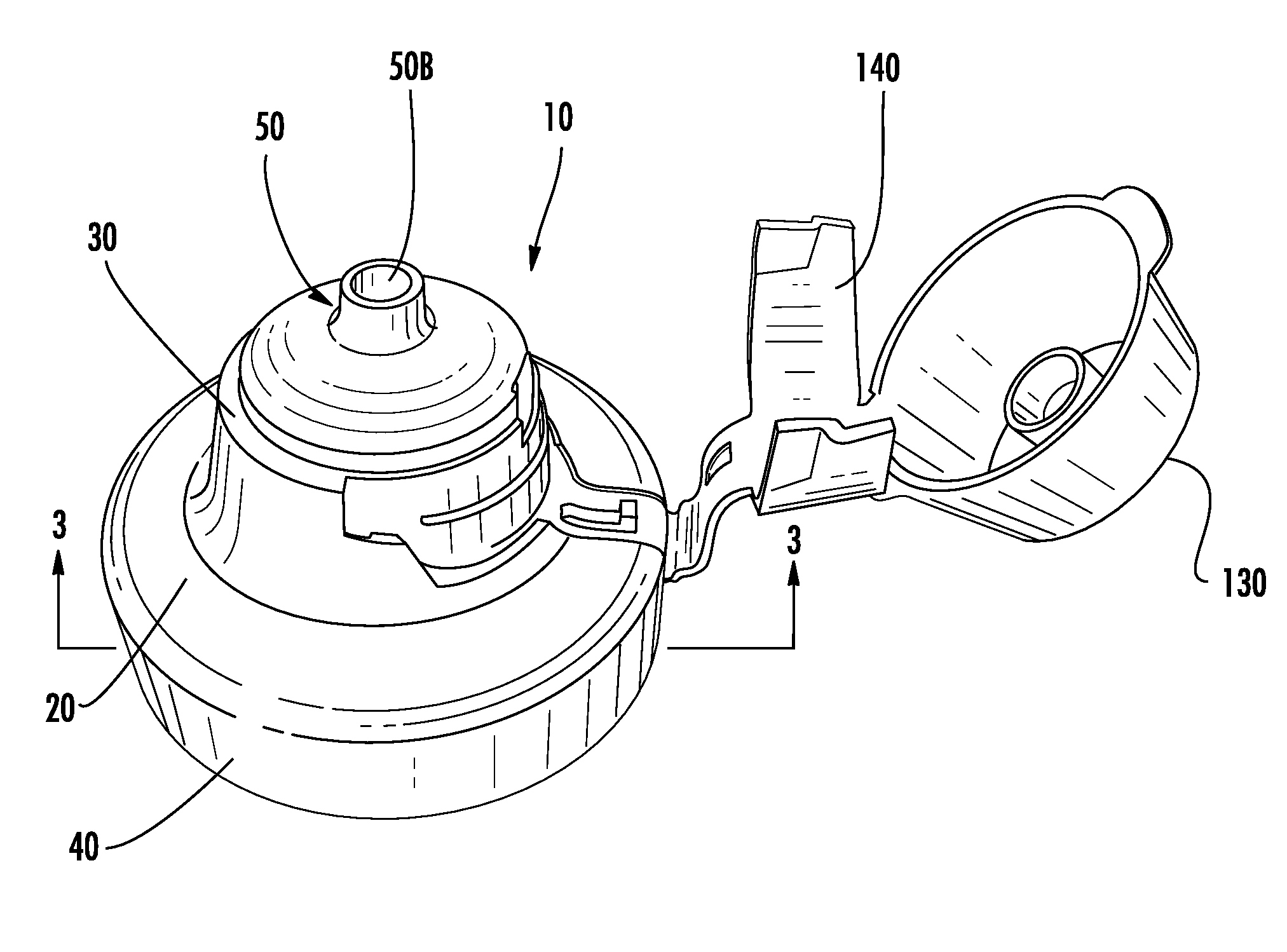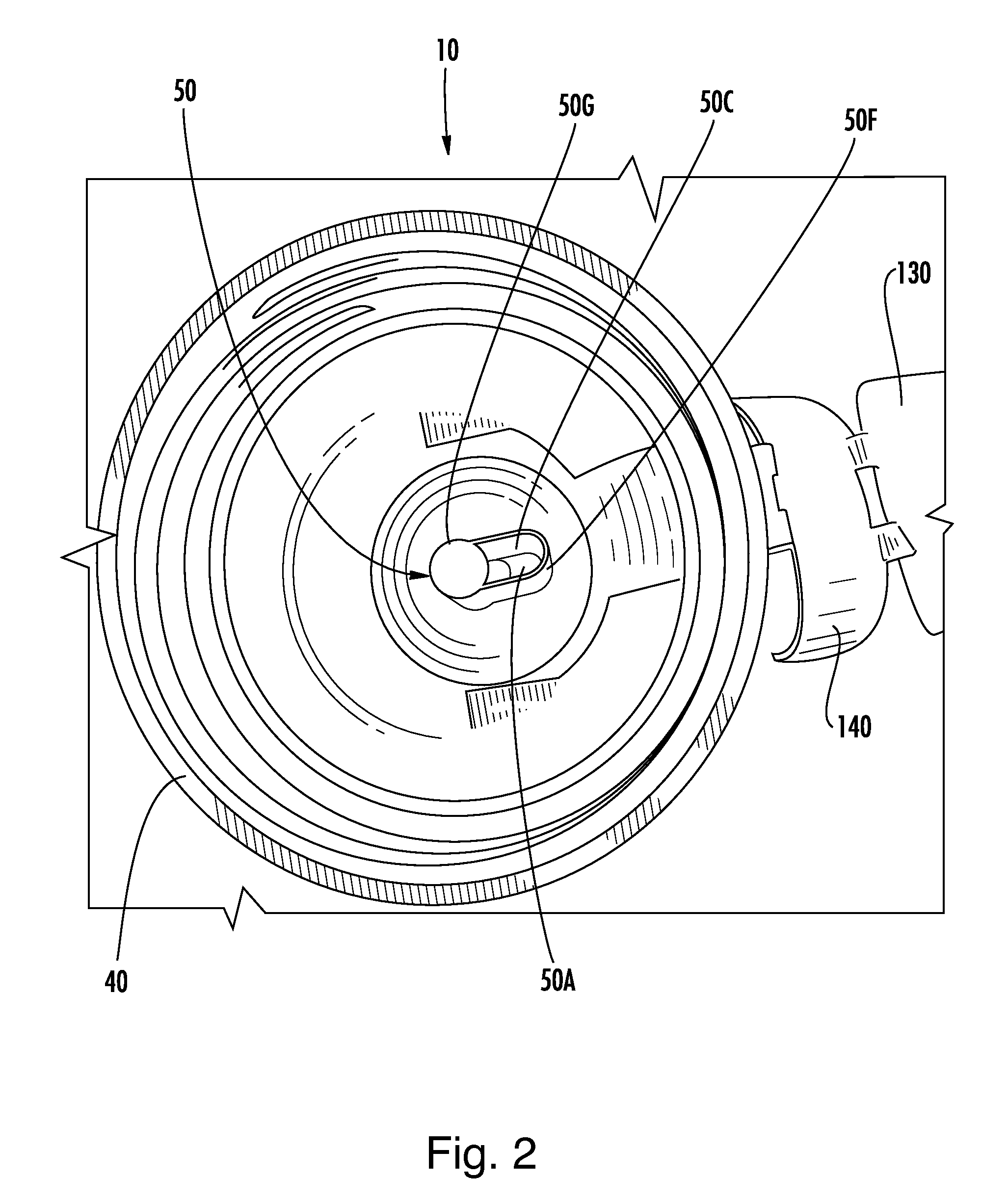Dispensing closure having a flow conduit with key-hole shape
a flow conduit and dispensing closure technology, applied in the field of squeeze-type container dispensing closures, can solve the problems of more difficult manufacturing, more expensive than traditional one-piece dispensing closures, and a messy appearan
- Summary
- Abstract
- Description
- Claims
- Application Information
AI Technical Summary
Benefits of technology
Problems solved by technology
Method used
Image
Examples
Embodiment Construction
[0033]Referring now to the drawings, the dispensing closure 10 of the instant invention is illustrated in FIGS. 1-4. As will hereinafter be more fully described, the instant dispensing closure 10 includes a unique flow conduit arrangement, which includes an offset, obstructed, and non-linear flow path. The unique arrangement provides anti-spurting in upright containers as well as “suck-back” for cleaner product dispensing, i.e. “clean pour”.
[0034]Generally, the dispensing closure 10 comprises a closure body 20, a closure lid 130 and a living hinge structure 140 hingeably connecting the closure lid 130 to the closure body 20. The closure body 20 has an upper deck 30 and a skirt 40 depending from the upper deck 30 where the skirt 40 is configured and arranged to mount to a product container (not shown). Preferably, the product container is a conventional squeeze-type container. Preferably, the skirt 40 is internally threaded for threaded mounting on a product container (See FIG. 2). H...
PUM
 Login to View More
Login to View More Abstract
Description
Claims
Application Information
 Login to View More
Login to View More - R&D
- Intellectual Property
- Life Sciences
- Materials
- Tech Scout
- Unparalleled Data Quality
- Higher Quality Content
- 60% Fewer Hallucinations
Browse by: Latest US Patents, China's latest patents, Technical Efficacy Thesaurus, Application Domain, Technology Topic, Popular Technical Reports.
© 2025 PatSnap. All rights reserved.Legal|Privacy policy|Modern Slavery Act Transparency Statement|Sitemap|About US| Contact US: help@patsnap.com



